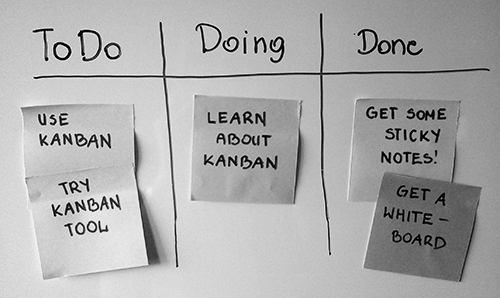With the move to more Agile ways of working many IT departments think that Service Level Management and SLAs are as dead as a dodo. Don’t kid yourselves - effective Service Level Management is as important today as it’s ever been...
The successful management of services is critical to ensuring that we meet the agreed needs of the business and our customers.
Service Level Management (SLM) and SLAs are often perceived as a stick to beat IT with. In fact, for those organisations who implement SLM well, it does quite the opposite, allowing both services providers and customers a common view of "what good looks like".
SLM also underpins many other Service Management processes. Good SLM allows for better informed business decisions, improved management of resources and staff workloads, and improved levels of service. It can also be used to support requests for changes in resources, demonstrate the valuable contribution of IT and IT Service Management and (where needed) positively change business behaviours.
Consider the following steps (drawn from the Continual Service Improvement Approach) for getting started with Service Level Management. As we are “getting started”, the emphasis is on the first two steps….
Step 1. What Is Our Vision For SLM?
- Do we understand what it is that we are trying to achieve with the SLM process?
- Have we clearly defined specific goals for this process and are they realistically achievable?
- Have we set realistic time scales?
- Are we able to measure the achievement of those goals?
- Have we taken into account the needs of all relevant stakeholders?
- How often shall we revisit this vision?
- How and when shall we communicate this vision to the stakeholders in this process?

Step 2. In Most Cases There Will Already Be Either Existing SLAs (Or Perhaps Just A Service Catalogue) In Place, Or At Least An Expectation Of Which Service Are Offered And To What Level. Finding Out "Where Are We Now" Can Be Helped By Asking Questions Like The Following:
- Do we have a clear definition of just who is a customer and have we formally identified and recorded all people/groups that meet that definition - in other words do we have a Customer Portfolio?
- Are there different types of customer? For example are some able to ask you to add or remove a service, while others can only ask you to alter a service?
- Do we have clear sight of all the services that we actually offer and to which customers they are important - in other words do we have a Service Portfolio (or at least a Service Catalogue)?
- Have we clearly identified all other stakeholders, for example internal staff, suppliers, government regulators or industry bodies, all of whom may have needs that should be reflected in the SLAs?
- Having identified the services, do we have a clear understanding of Core, Enabling and Enhancing services and how they are related?
- Core services are those that the customer can directly relate to achieving their Outcome(s). It is the Core Services that need to be covered by SLAs and listed in the customer view of the Service Catalogue.
- Enabling Services have to be present for the Core Service to work, but the presence of Enabling Services is not usually noticed by the customer – until one of more of the Enabling Services fail, causing in turn the Core Service to fail. Enabling Services can be covered by SLAs but that often means a greater number of detailed SLAs than is appropriate. OLAs and UCs may well cover Enabling Services.
- Enhancing Services do not have to be present at all. They give something extra to the customer beyond what they expected in the Core Service. Enhancing Services are often offered as “free” without any SLA covering them. Enhancing Services are typically available to all customers.
- Are there any Service Options currently being offered? Service Options have to be chosen by the customer and possibly paid for.
- Is there any local process definition already in existence for SLM that we can build on?
- Have we identified and reviewed any existing SLAs, whether they are up-to-date, whether they are in regular use etc.?
- Do we have a full understanding of our customers' current level of satisfaction with the services they are receiving? Are there already regular or ad hoc reviews with customers covering the delivery of services?
- Are there any Operational Level Agreements (OLAs) in place, if so have they been reviewed? If there are none currently, how will we ensure the involvement of internal stakeholders in writing both OLAs and SLAs?
- Do we have a Supplier Management process in place? Have we reviewed existing Underpinning Contracts, especially with regard to their influence on our service delivery and any targets in them?
- What is the level of maturity of other key processes, such as Business Relationship Management, Portfolio Management, Incident Management, Problem Management, Financial Management for IT Services?

If any of the above elements are missing, we can still make progress – but we mustn’t let ourselves be overcome by the apparent size of the task - “a journey of a thousand miles starts with a single step”. The detail of the following steps will depend on what our vision is (Step 1) and what we discovered to be our current situation in Step 2 ...
Step 3. Are We Able To Define Some Clear Short And Medium Term Goals That Will Move Us Toward Our Vision? In Other Words, Where Do We Want To Be Next?
- We will need to define some SMART targets for what we are trying to achievable - SMART stands for Specific, Measurable, Achievable, Relevant and Time-based. Those targets for this process (as opposed to the targets for services within SLAs) will need to be based on defined Key Performance Indicators (KPIs) for this process (see below).
- We should be able to define the major elements of the process, i.e. inputs, activities and outputs. Note that it is not necessary to get every element completely defined in one implementation - we could take an Agile approach to process implementation.
- Once we know the major elements of the process, we can identify Critical Success Factors (CSFs) for the process. For each CSF we will need to identify at least one KPI so that we may know to what level we are achieving the CSF.
- ITIL® suggests a number of metrics and KPIs for SLM, as does COBIT. Other possible sources include any alternative service management frameworks you have access to, for example Microsoft Operations Framework (MOF). Another source of possible measurements to use is the KPI Library – https://kpilibrary.com/. Note that in each case we should choose metrics and KPIs that are suited to our particular environment – just because other organisations are measuring a certain thing doesn’t mean it is appropriate for every organisation to measure it.
- Are we able to build on existing OLAs? If there are none in place, will it be possible to simultaneously develop OLAs and SLAs?
- Do we have a clear idea of which types of SLAs we will want to implement, e.g. Corporate, Customer and/or Service based SLAs?

- Corporate SLAs cover all services which are the same for all customers. For a service provider with a very small number of services and customers this may be the only SLA needed.
- Customer based SLAs cover all (or most) services used by a particular customer or customer group. It is not usually feasible to write individually tailored SLAs for each customer (remember this would also mean given each customer individually tailored service as well!), but we could group customers together (e.g. into Gold, Silver and Bronze groups) and then offer SLAs appropriate to the group.
- Service based SLAs cover one service only. If we are offering a medium to large number of services it is unlikely that used Service based SLAs alone will be appropriate. For example if we only offered Service based SLAs and a customer wanted 200 services from us, that customer would have to sign 200 SLAs – it is unlikely they will be happy about that!
- Therefore we should consider the context in which we are offering services and then offer an appropriate SLA type or combination of types.
- Is it our intention to eventually cover every single service by an SLA, perhaps only to cover the most important services, or something in between?
- Are there any Service Options that we should offer? For example should we offer options for some customers but not others, or will every customer receive exactly the same service?
- How will we ensure that all stakeholders can get access to the SLAs? For example, will they be available via web pages and/or an app
Step 4. The Next Things That Is Needed Is A Clear Plan To Get From Where We Are Now (Step 2) To Where We Want To Be Next (Step 3). The Creation And Implementation Of This Plan Can Be Helped By Considering The Following Questions:
- Have we access to the resources we will need, e.g. funding, staff etc.
- Do we have visible and ongoing buy-in from our stakeholders?Have we considered how to “sell” the plans to the stakeholders, usually be identifying what-is-in-it-for-them and then ensuring they are aware of these benefits?
- Have we planned and implemented a communications plan for this change?
- Are we going to use a traditional waterfall type project approach, an Agile approach or a combination of different methods?
- Have we considered the Organisational Change aspects of this plan?
- In other words does the plan allow for all the elements that make for successful changes (for example, see Kotter's Eight Steps for successful changes).

Step 5. Did We Get There - Given The Goal That Was Defined In Step 3, Are We Able To Measure The Success (Or Otherwise) Of This Change?
- Note that it may take some time before we can be completely sure of the level of success. For example, if SLAs were previously viewed with indifference or even suspicion, it make take some time to overcome embedded attitudes.
- We should have identified our KPIs and Metrics in Step 3 but it may prove that we have to change, add or remove some of them once we begin to operate this process.
- It will also be necessary to carefully analyse the results we get from our measurements. For example, if the measurements show us that there is an increase in the number of accesses to online SLAs we should not necessary conclude that they are successful – the increase in access may just be due to initial curiosity.

Step 6. We Need To Ensure That This Implementation Has Been Successful And Becomes Permanent
It is very wasteful to make an improvement but fail to embed is as "the way we do things here". We then need to cycle back to steps 1 & 2 - even if the implementation of SLM was completely successful in one attempt (unlikely!) things change over time and so we should adopt a Continuous Improvement mindset.
While you are considering the above steps to getting started with SLM, bear in mind that many other organisations have been down this road previously, so don't re-invent the wheel! Make use of existing resources, for example consider the ITIL® publications "ITIL® Service Design" and "ITIL® Practitioner Guidance". While it is useful to use well established frameworks such as ITIL®, also consider making use of the experiences of other people that have succeeded with SLM, perhaps through LinkedIn groups. Another issue that needs careful consideration is the interfaces between this process and other Service Management processes.
For example it is quite common to offer Availability and Incident Management targets in SLAs – but are those processes at a level of maturity that would make it feasible to include targets for them? Once again, if the other processes are immature that does not mean that we should stop dead in our development of the SLM process, but that we should both develop SLM and plan to improve the other processes as well. Process maturity can be assessed by using tools such as CMMI (Capability Maturity Model Integration) or PMF (Process Maturity Framework). The ITIL® Service Design publication includes details of both the SLM Process and process maturity levels.
If this article has not answered all your questions then watch out for our forthcoming blog "Service Level Management Checklist" for some practical tips on SLA contents, targets etc. Also remember that Purple Griffon are happy to assist you in terms of training and consultancy.
And before you go, you might want to take a look at the foundation course for ITIL 4 that we offer.
Or you might find this post about ITIL Change Management interesting to read.


